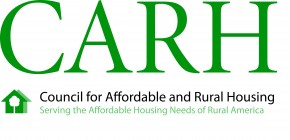- November 2022
- October 2022
- September 2022
- August 2022
- July 2022
- June 2022
- May 2022
- April 2022
- March 2022
- February 2022
- January 2022
- December 2021
- November 2021
- October 2021
- September 2021
- August 2021
- July 2021
- June 2021
- May 2021
- April 2021
- March 2021
- February 2021
- January 2021
- December 2020
- November 2020
- October 2020
- September 2020
- August 2020
- July 2020
- June 2020
- May 2020
- April 2020
- March 2020
- February 2020
- January 2020
- December 2019
- November 2019
- October 2019
- September 2019
- August 2019
- July 2019
- June 2019
- May 2019
- April 2019
- March 2019
- February 2019
- January 2019
- December 2018
- November 2018
- October 2018
- September 2018
- August 2018
- July 2018
- June 2018
- May 2018
- April 2018
- March 2018
- February 2018
- January 2018
- December 2017
- November 2017
- October 2017
- September 2017
- August 2017
- July 2017
- June 2017
- May 2017
- April 2017
- March 2017
- February 2017
- January 2017
- December 2016
- November 2016
- October 2016
- September 2016
- August 2016
- July 2016
- June 2016
- May 2016
- April 2016
- March 2016
- February 2016
- January 2016
- December 2015
- November 2015
- October 2015
- September 2015
- August 2015
- July 2015
- June 2015
- May 2015
- April 2015
- March 2015
- February 2015
- January 2015
- December 2014
- November 2014
- October 2014
- September 2014
- August 2014
- July 2014
- June 2014
- May 2014
- April 2014
- March 2014
- February 2014
- January 2014
RD Multifamily Disaster Guidance – Tornados in Kentucky and Other States
On December 13, USDA Rural Development Office of Multifamily Housing sent the following information:
Multifamily Housing Partners,
Given the recent disasters in Kentucky and other states in the area, please be reminded of guidelines for Rural Housing Service Multifamily properties and tenants affected by the storms.
Borrowers and Management Agents in the area will be contacted by your assigned servicing specialist with guidance on how to report property damage along with emergency assistance needed for tenants. Property damage should be reported on the following scale:
| Degree of Damage | Definition |
| Affected | The building(s) has cosmetic damage only. · Damage that does not adversely impact the functionality of the building. · No damage that affects unit habitability. |
| Minor | The building(s) is damaged and requires minimal repairs. · No structural damage to the building. · No damage that affects unit habitability. |
| Major | The building(s) has sustained significant damage and requires extensive repairs. · Structural damage or damage that created areas that are no longer decent, safe and sanitary. · Damage that affects unit habitability. |
| Destroyed | The building(s) is a total loss. |
| Inaccessible | Damage to building(s) that cannot be visually verified. |
If a Borrower or Management Agent needs to reach Rural Development Staff, please send an email to Southern Regional Director Byron Waters, at MFHFODSouth@usda.gov. Byron can also be reached at (919) 632-4593.
Borrowers or Management Agents can reach out directly to their assigned servicing specialist. If needed, please use the following link and once there, click on “Multifamily Housing 514 & 515 Property Assignments”: https://www.sc.egov.usda.gov/data/MFH.html
Letters of Priority Engagement (LOPE) will be issued to tenants of Rural Development properties whose units become uninhabitable due to a localized or widespread natural disaster, including Presidentially Declared Disasters. For Presidentially Declared Disasters, FEMA issues registration letters certifying displacement to both tenants of Rural Housing Multifamily and non-Rural Housing households.
Either a FEMA registration letter or a LOPE letter grants the applicant priority access at a Rural Development Multifamily building. A displaced applicant can go immediately to the top of the waiting list for occupancy. In addition, property owners and management agents may request Special Actions and Waivers that can be provided by the Agency through their assigned servicing representative, including waivers to allow for temporary housing of displaced persons who do not otherwise fit the occupancy criteria, for example, a family may temporarily move into a building with an elderly designation.
Thank you for your assistance in housing displaced persons during this time and during all natural disasters. If you have questions about how RD’s policy applies for your property, please contact your assigned servicing representative.
Nancie-Ann Bodell
Deputy Administrator
Multifamily Housing





